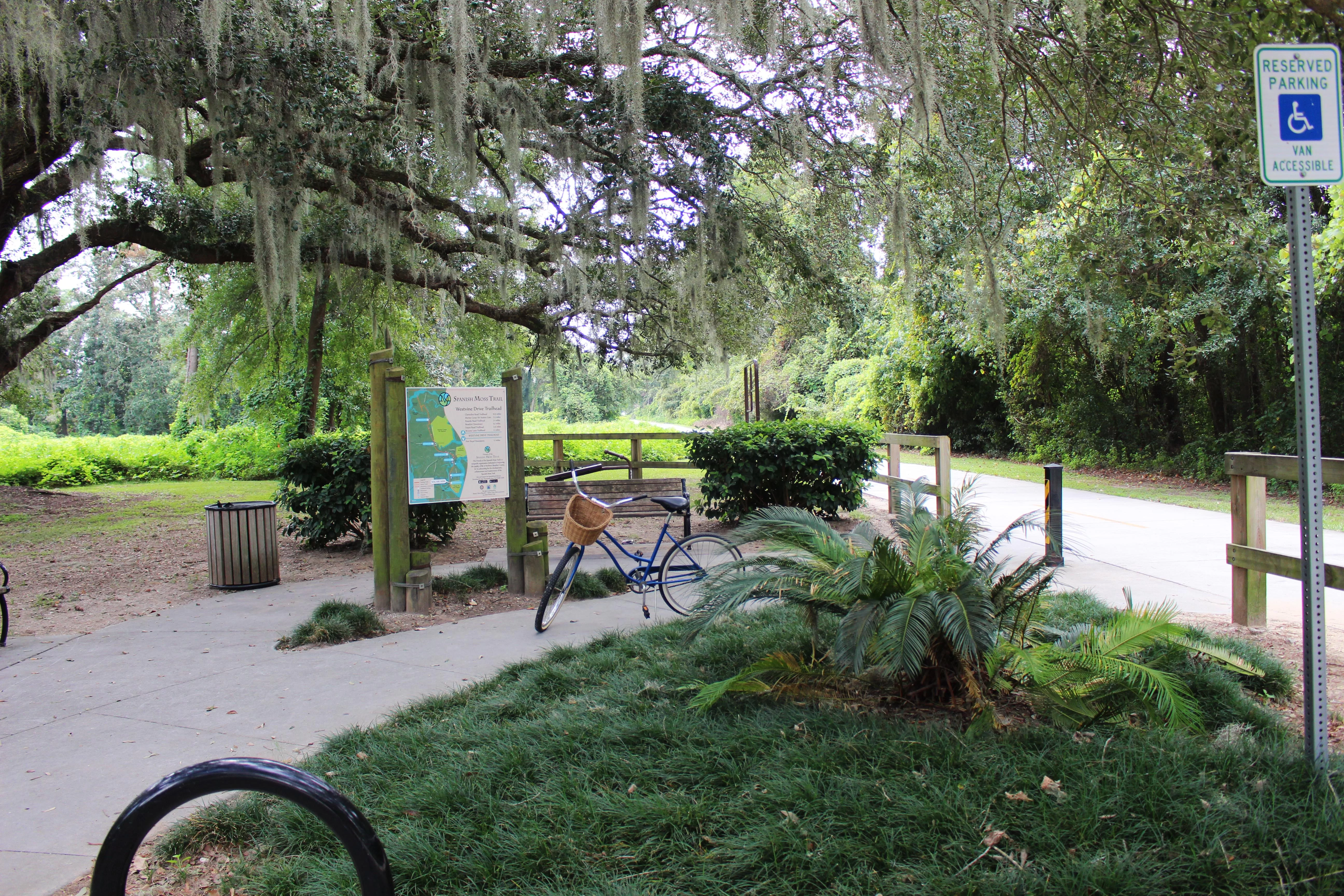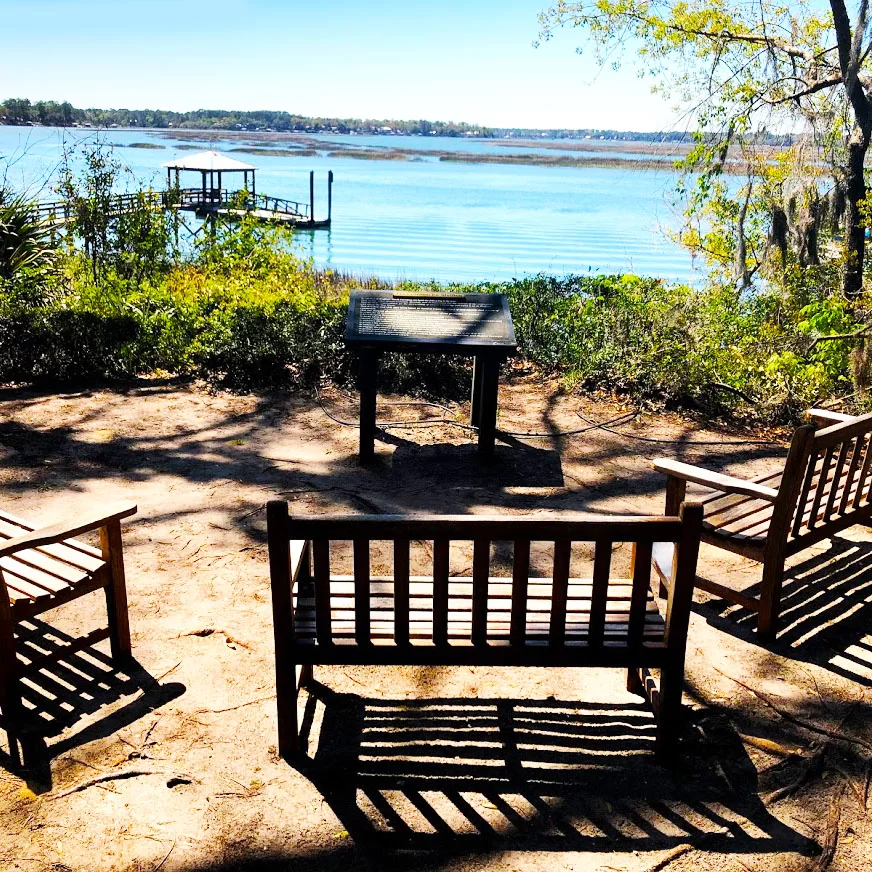Southbound from Robert Smalls Parkway to Port Royal

Photo by Carmen Pinckney.
The Spanish Moss Trail is an expanding rails-to-trail greenway running from northern Beaufort County to Port Royal along the historic Magnolia Line Railroad. This 10-mile greenway has become a must-experience activity for locals and tourists alike. The 12-foot-wide paved trail is a great space for walking, running, biking, skating, scooting, strolling or even fishing. The trail is handicap accessible, and parking is provided.

Photo by Carmen Pinckney.
The Spanish Moss Trail offers spectacular views of Lowcountry marshes, waterways, coastal wildlife and historic points of interest. Points of interest are well marked along the trail. Pets on a leash are welcome on the trail. Doggie bag stations are available as well. There’s even a place to pump up your tires at the Depot Road access point. You can also find recreational fishing spots on various trestles along the trail.

Photo by Carmen Pinckney.
Bringing a bottle of water is a good idea. You can refill it at any of the trailheads. There are also two restroom/port-a-potty facilities at the Broome Lane and Depot Road Trailheads. The Westvine Trailhead has equipment for push-ups and pull-ups.

From one of the trestles it was easy to spot a family of wood storks taking an afternoon nap. These wading birds are rather humble looking when at rest but are beautiful in flight. Also visible along the way are butterflies, king fishers and many other wading birds.

Fishing is great fun on the Spanish Moss Trail. Bring your supplies but remember to take your refuse with you when you leave.

Along the way visitors encounter the remains of the Seacoast Packing Company. This building began life as a meat packing plant, with hopes of encouraging farmers to raise livestock. This venture failed almost immediately. It later went on to be used as a grocery warehouse, a tomato canning plant and eventually a pickle packing plant. This building was once surrounded by other structures important to the railroad. Today it is the only remaining reminder of the once busy railroad area.

Another reminder of days gone by is the Charles E. Danner & Co. Grocery Warehouse. This remaining brick building was once surrounded by other warehouses at the Port Royal Railroad Depot. Located outside visitors will find a map showing the locations of other businesses that used to grace the depot area.
Plan on spending at least two hours to bike the southern side of the Spanish Moss Trail. Give yourself more time if you’re walking. Be sure to pack supplies for your journey. Make sure to stop along the way to read historic markers and enjoy views from the trestles. If you get tired just take a break on one of the many benches provided. Travels to the other side of Beaufort’s Spanish Moss Trail can be saved for another day.

For more information on Beaufort attractions visit https://southcarolinalowcountry.com/. Other Lowcountry nature trails and wildlife preserves can be found at https://southcarolinalowcountry.com/wildlife-preserves-and-nature-trails/ .

























































































